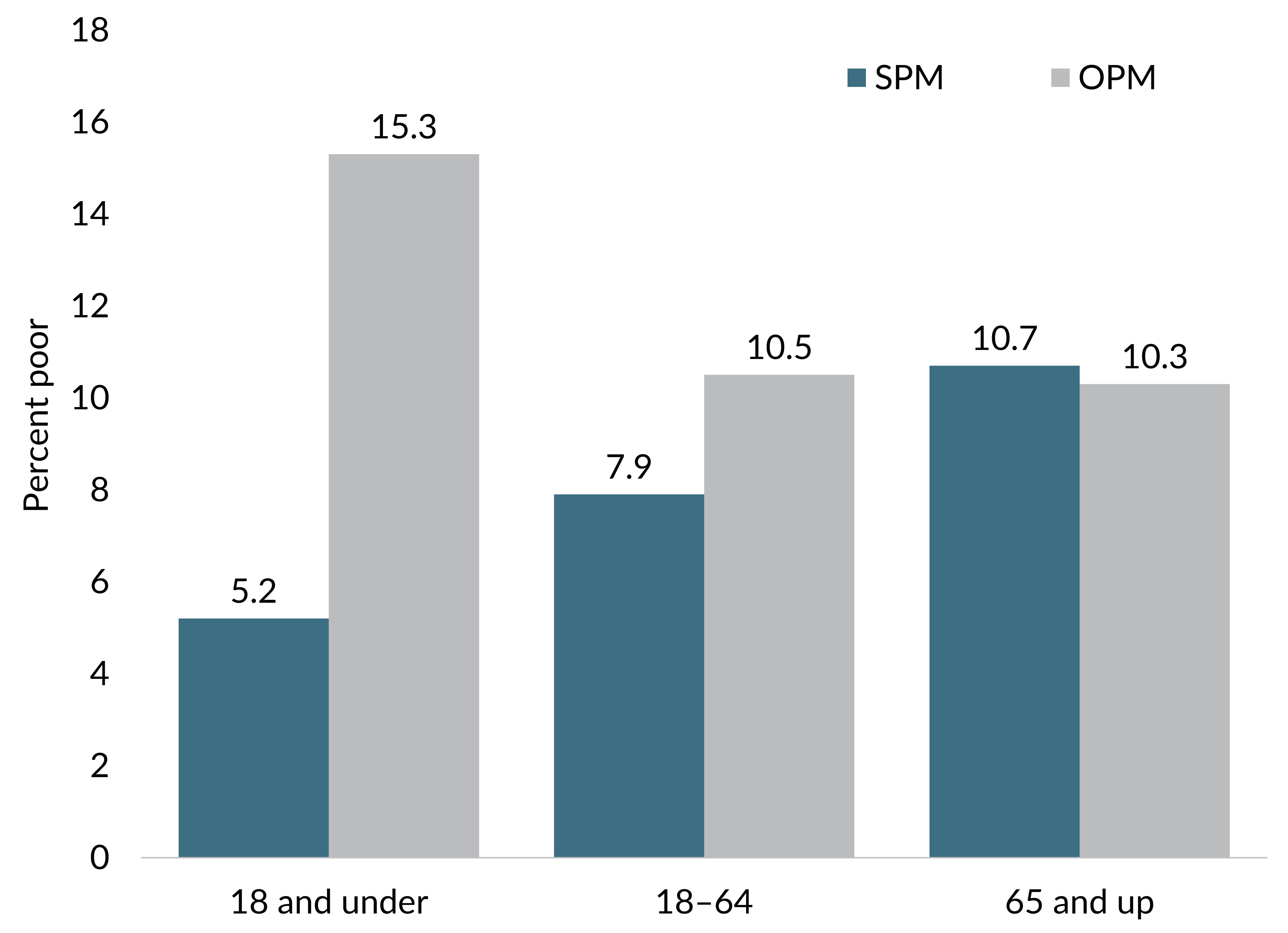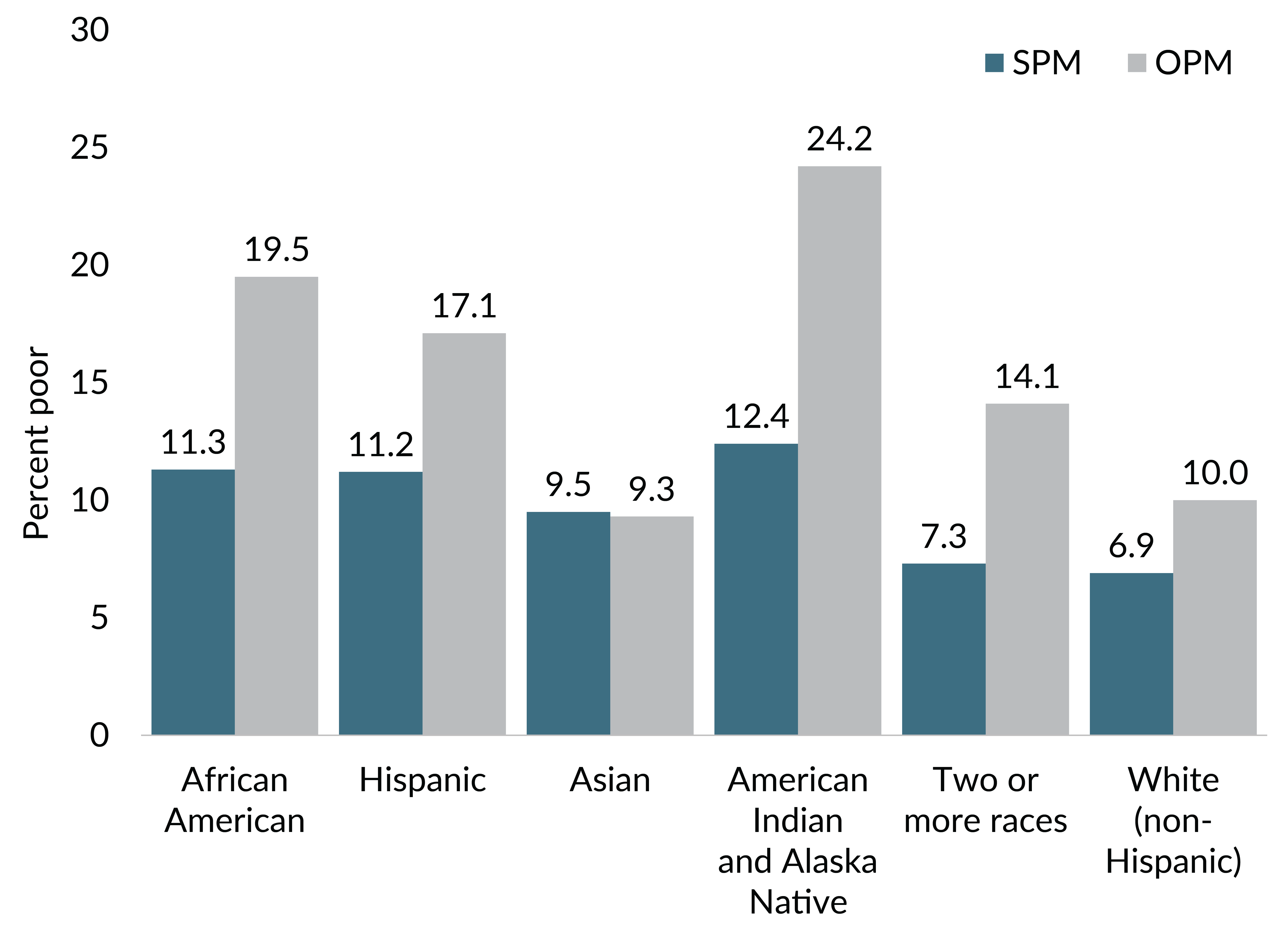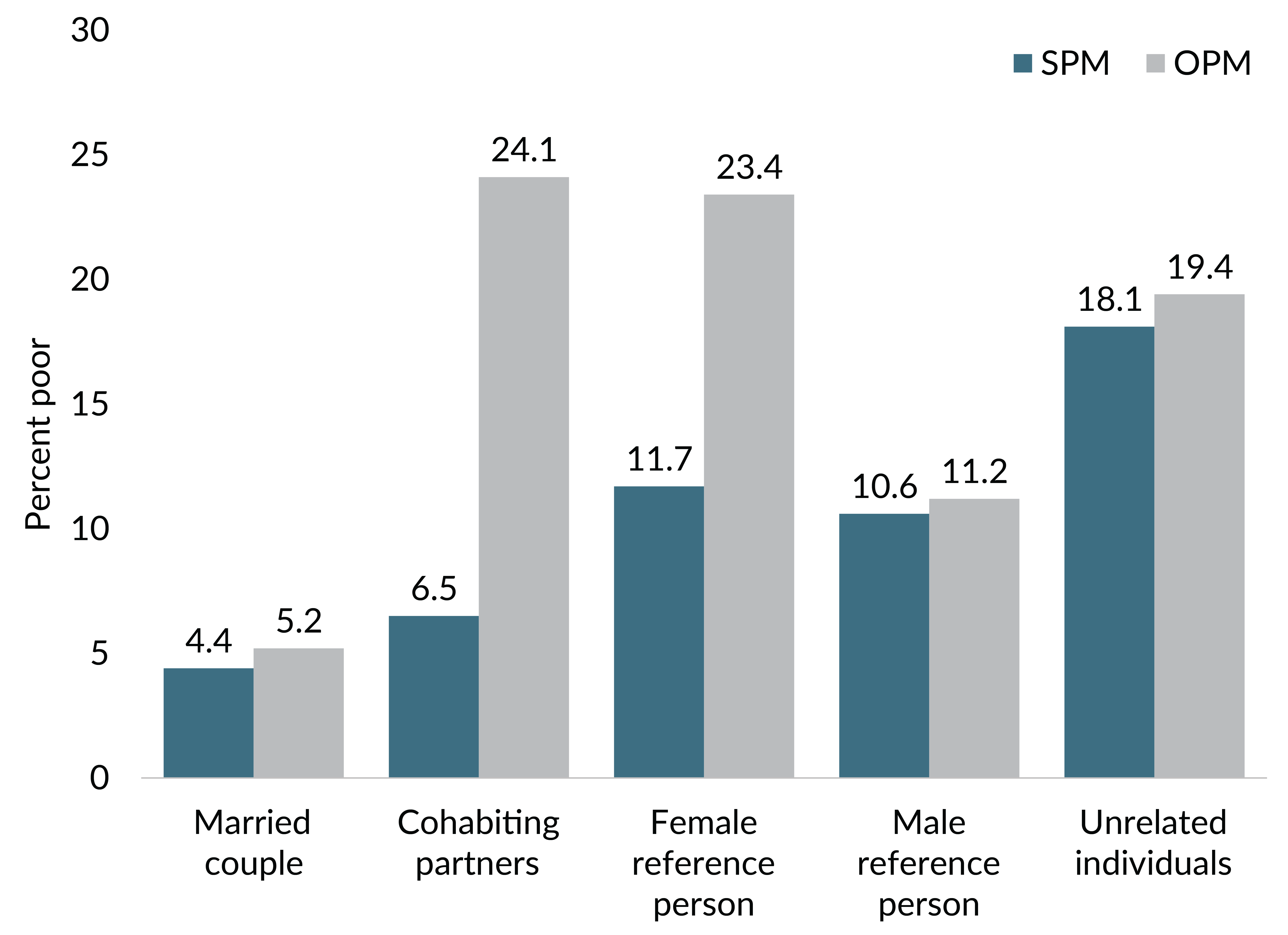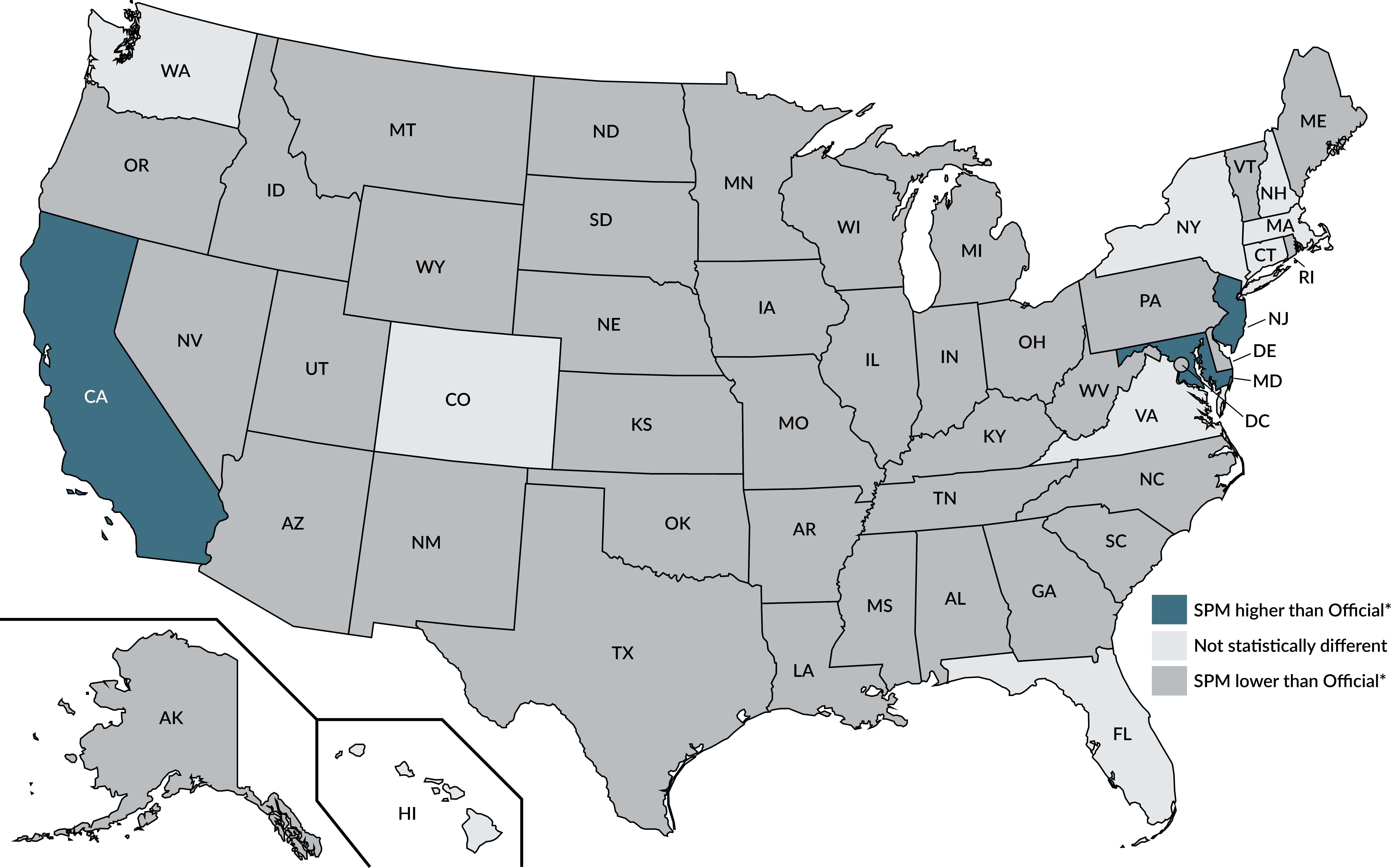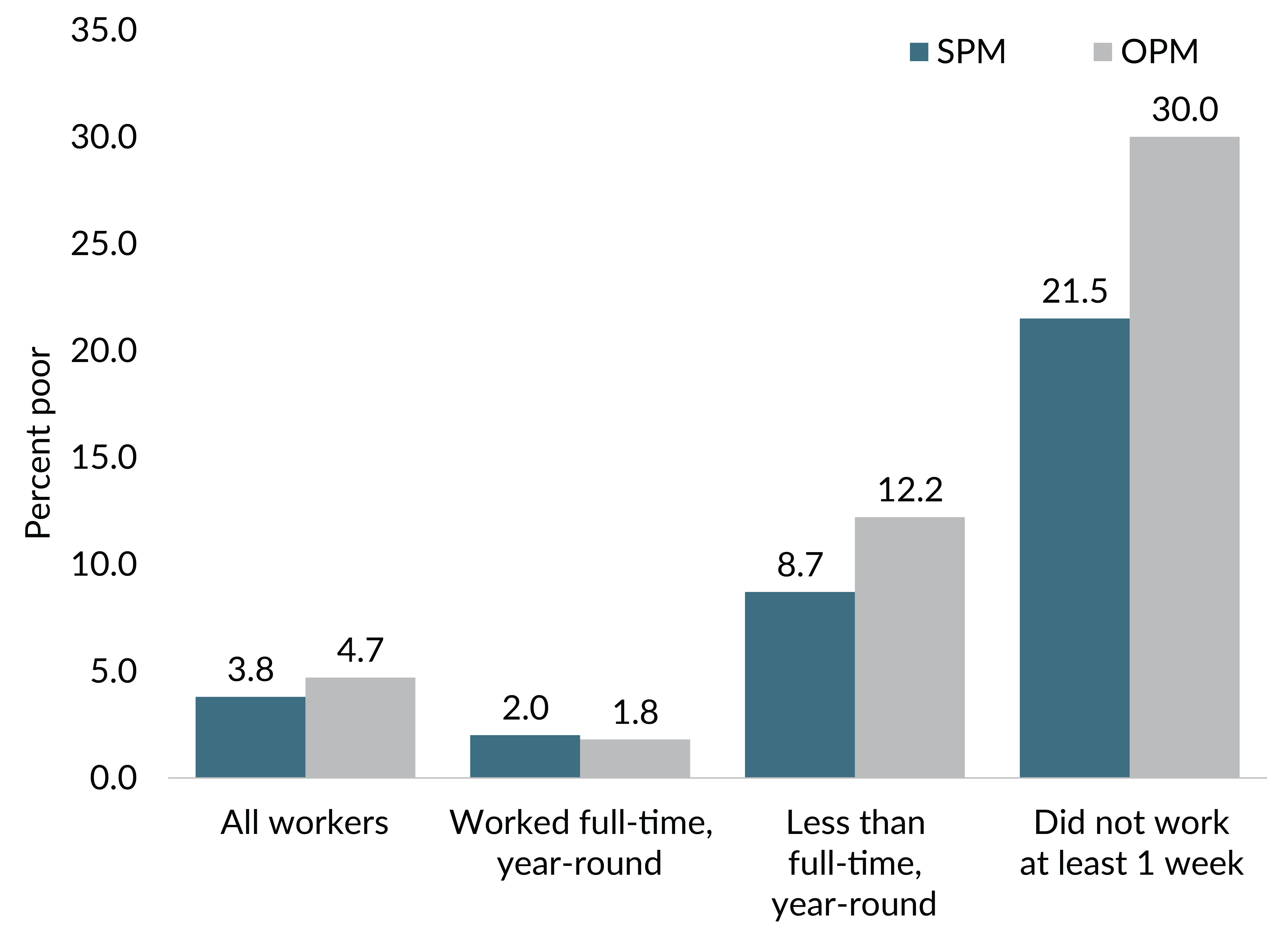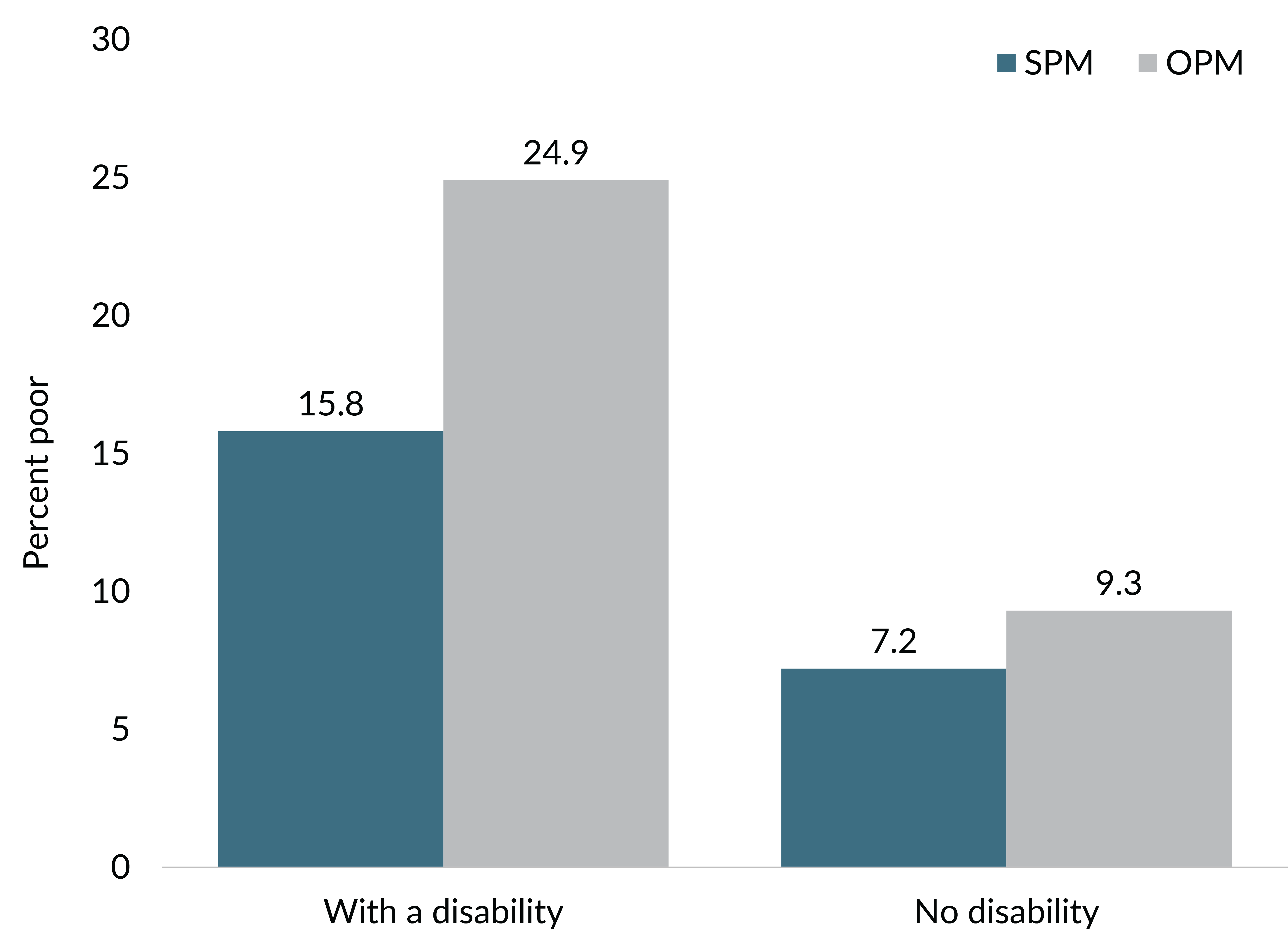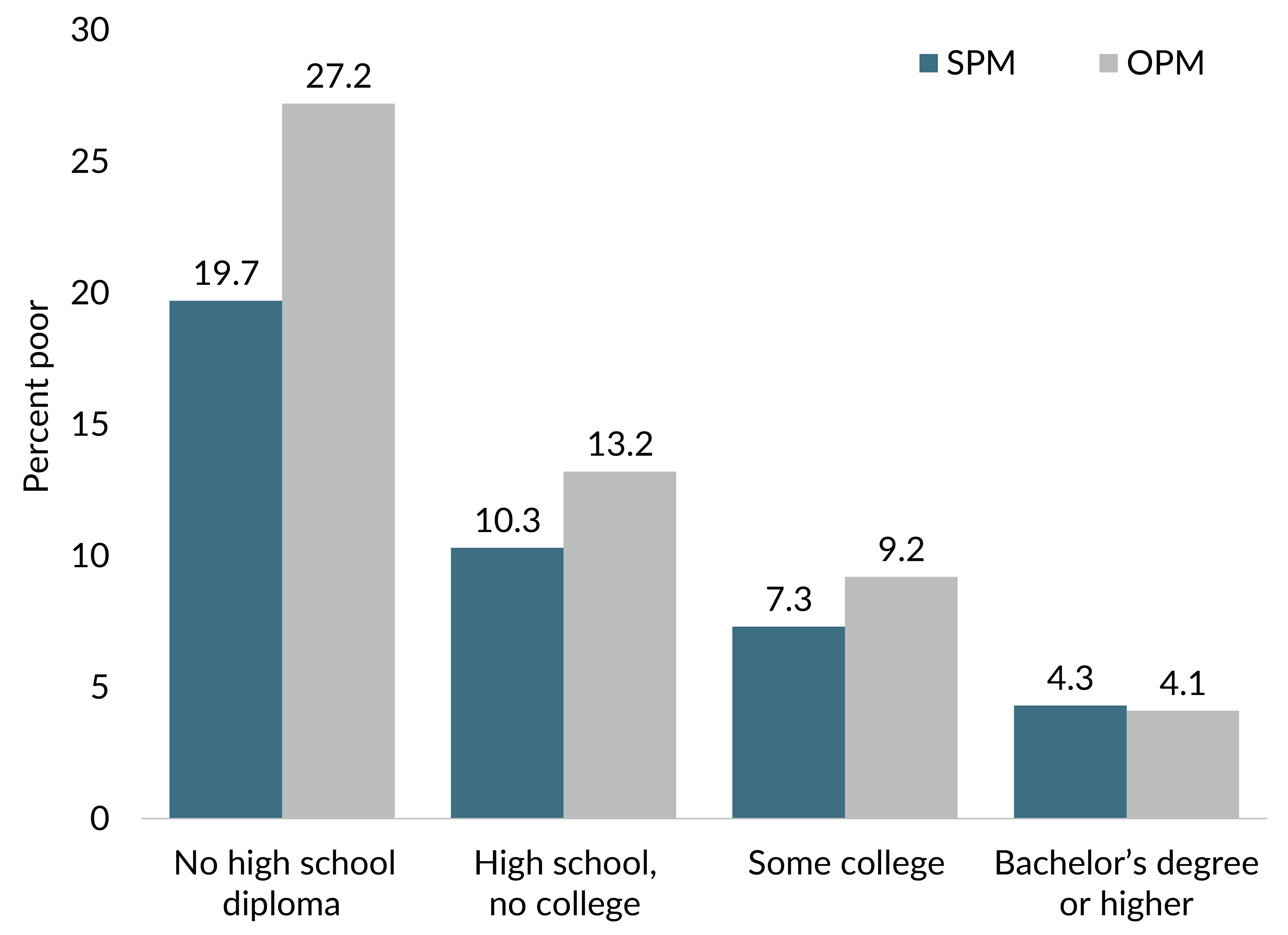The most recent U.S. Census Bureau report on poverty in the United States presented estimates using two measures, the official poverty measure, or OPM, and the supplemental poverty measure, or SPM. The OPM is the main measure used by the federal government to track poverty and it is also used as the basis for determining eligibility for many anti-poverty programs. It is based on a formula for measuring poverty developed in the 1960s that has been updated for inflation since that time. The SPM is a more up-to-date measure that provides more information on the needs and expenses of households today. Unlike the OPM, the SPM accounts for geographic differences in the cost of living, measures the impact of many major anti-poverty programs, and has a broader definition of household membership that better reflects today’s families. For more, see our FAQ: How Poverty is Measured?
Under the official poverty measure, the poverty rate in 2021 was 11.6% and 7.8% under the supplemental poverty measure.
The graph below shows the U.S. poverty rate for the Official Poverty Measure (1959 to 2021) and the Supplemental Poverty Measure (1967 to 2021). The Census Bureau introduced the SPM in 2010, so rates shown from 1967 to 2010 are historical SPM estimates developed by researchers at Columbia University.
Other Poverty FAQs
Sources: US Census Bureau Historical Poverty Tables: People and Families, 1959–2021. Table 2. Chris Wimer, Liana Fox, Irwin Garfinkel, Neeraj Kaushal, Jennifer Laird, Jaehyun Nam, Laura Nolan, Jessica Pac, and Jane Waldfogel. 2022. Historical Supplemental Poverty Measure Data 1967-2020. Center on Poverty and Social Policy, Columbia University.
The official U.S. poverty rate when it was first measured in 1959 was 22.4%; then, after a major decline over the 1960s, poverty has hovered between about 10% and 15%. Over that period, the SPM or historical SPM has generally been a few points higher than the OPM (because the SPM has higher and more accurate poverty thresholds). This pattern was reversed in 2020, and now 2021, because the SPM rate reflected the poverty-reducing effect of public benefits offered in response to the COVID-19 pandemic.
Poverty Rates by Demographic Subgroups
The U.S. Census Bureau releases annual estimates of poverty by various subgroups in the United States. Below, this section describes each of these groups for the year 2021:
